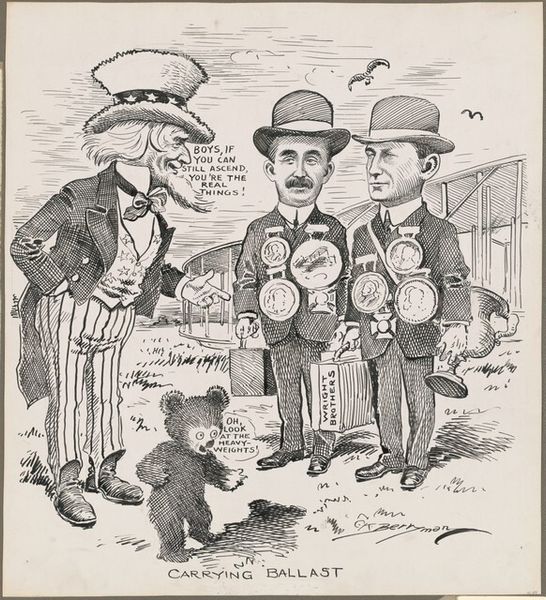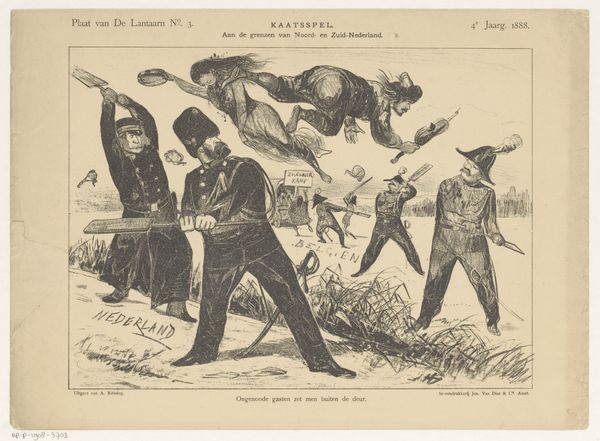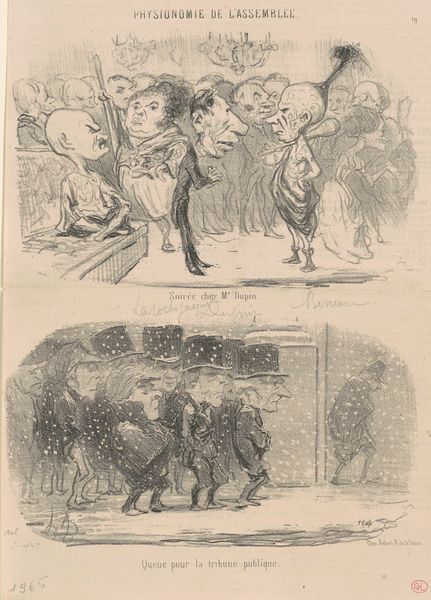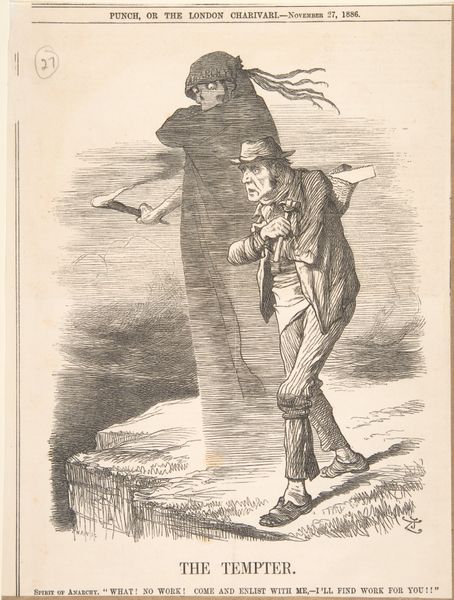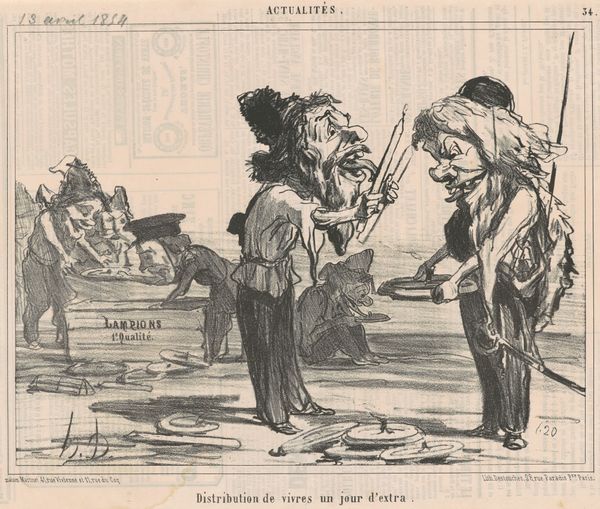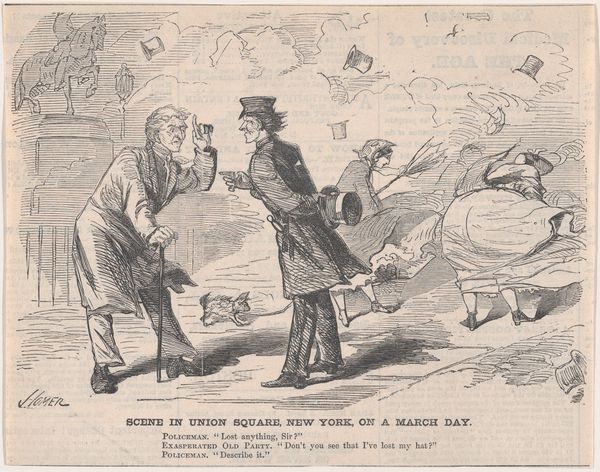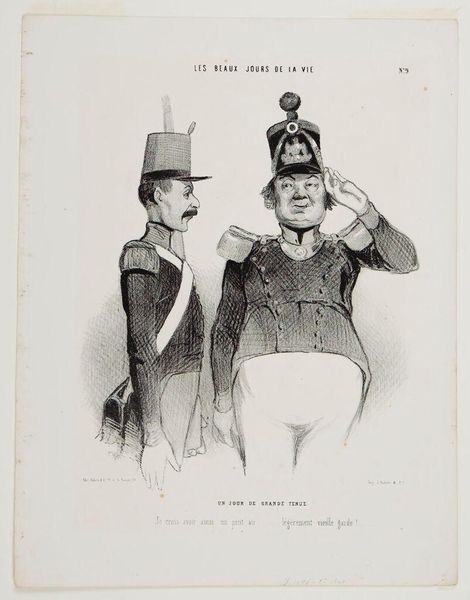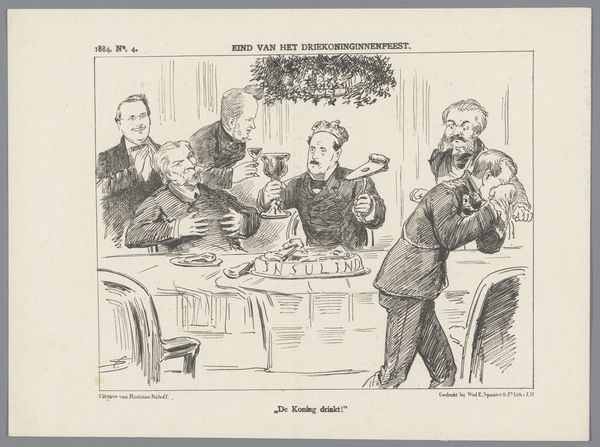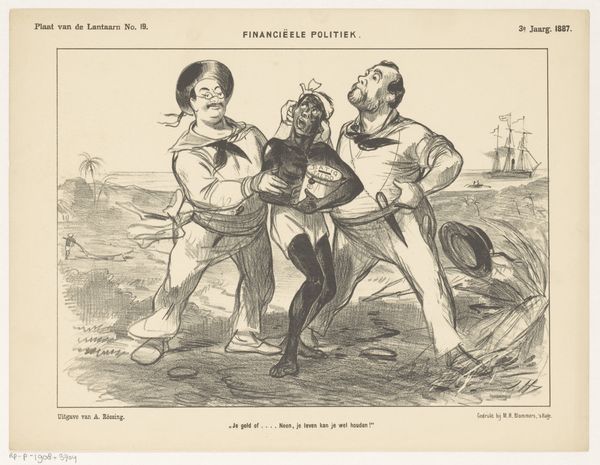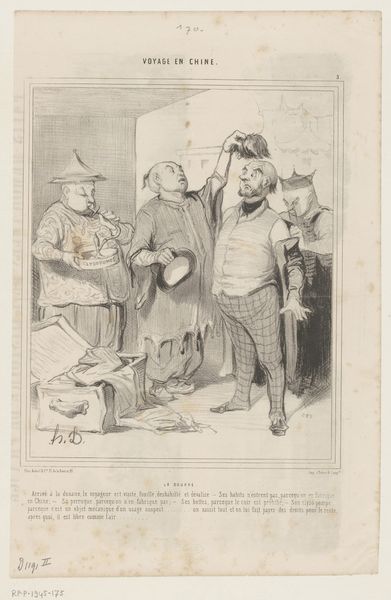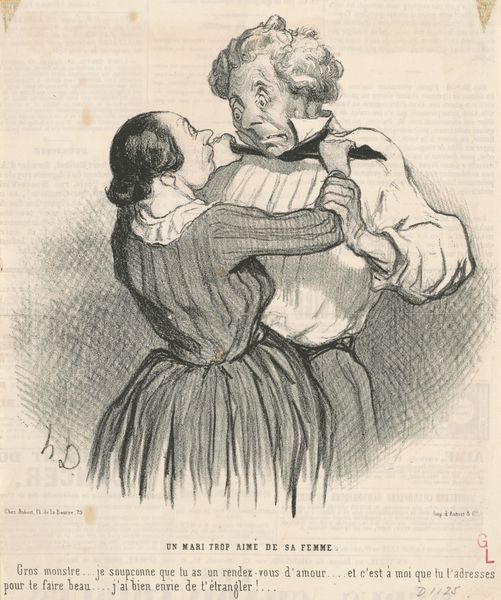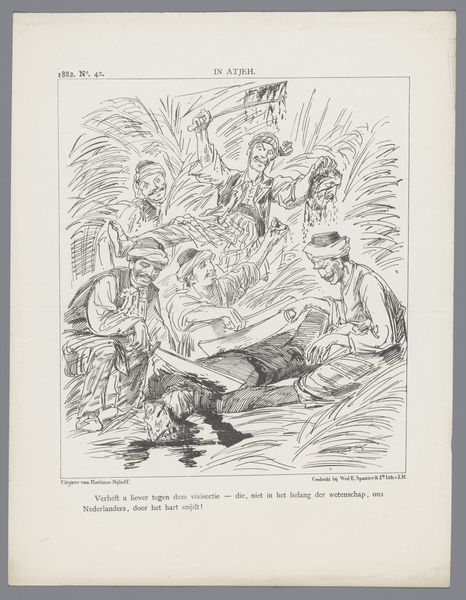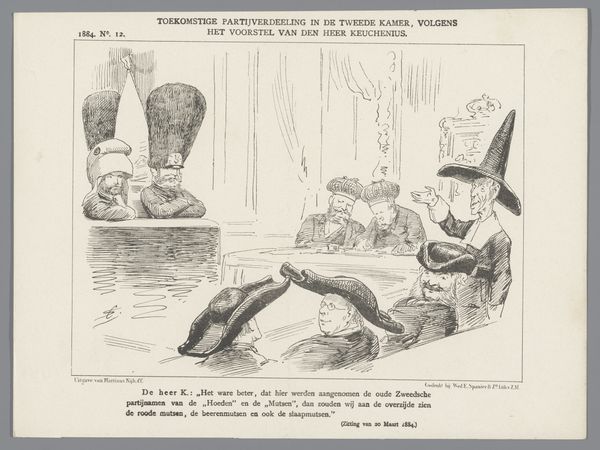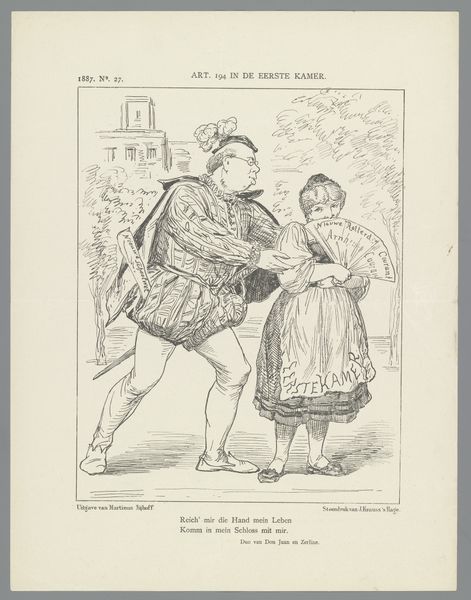![Chicago Nominee: "I knew him, Horatio; a fellow of infinite jest...Where be your gibes now?–Hamlet, Act IV [sic], Scene 1" by Justin H. Howard](/_next/image?url=https%3A%2F%2Fd2w8kbdekdi1gv.cloudfront.net%2FeyJidWNrZXQiOiAiYXJ0ZXJhLWltYWdlcy1idWNrZXQiLCAia2V5IjogImFydHdvcmtzLzFhZmYyMjBhLWVmNjQtNDM2ZS05ZTMzLWE3NjI3Yzk3OWRlOC8xYWZmMjIwYS1lZjY0LTQzNmUtOWUzMy1hNzYyN2M5NzlkZThfZnVsbC5qcGciLCAiZWRpdHMiOiB7InJlc2l6ZSI6IHsid2lkdGgiOiAxOTIwLCAiaGVpZ2h0IjogMTkyMCwgImZpdCI6ICJpbnNpZGUifX19&w=3840&q=75)
Chicago Nominee: "I knew him, Horatio; a fellow of infinite jest...Where be your gibes now?–Hamlet, Act IV [sic], Scene 1" 1864
0:00
0:00
drawing, ink
#
drawing
#
ink drawing
#
caricature
#
ink
Dimensions: Sheet: 12 x 16 5/8 in. (30.5 x 42.2 cm)
Copyright: Public Domain
Editor: This is "Chicago Nominee," an 1864 ink drawing by Justin H. Howard. It’s quite striking and also rather grim. What really stands out to me is how theatrical it feels. What's your interpretation? Curator: Indeed. The theatricality is key, signaled by the Hamlet quote and costuming. But consider the date, 1864: This wasn't mere drama, it was the American Civil War. Who is this 'Chicago Nominee,' holding what appears to be Lincoln’s severed head, like Hamlet contemplating Yorick's skull? The image resonates with a deep cultural anxiety, the potential disintegration of the Union. The skull at the feet further underscores this memento mori. Do you think the artist succeeds in conveying the emotional weight of the time? Editor: Absolutely. I see how the theatrical elements heighten the sense of tragedy and the real anxieties of the war. Is that a gravedigger to the right, and who do you think he represents? Curator: Precisely. The gravedigger digging Lincoln's political grave suggests the artist believes the “Chicago Nominee” is burying the President, his policies, or perhaps the Union itself. But the gravedigger is rendered sympathetically. Can we see, perhaps, even reluctant acknowledgement of the necessity, or even righteousness, of burying Lincoln's legacy? Editor: That's fascinating. It shifts the entire meaning, from a straightforward condemnation to something far more nuanced. It’s a powerful piece, layered with meaning. Curator: Yes, and the caricature, through distorted features, serves to both identify figures and communicate judgments about their moral character and fitness to lead in a time of crisis. Visual propaganda, then, with a long and impactful legacy in popular visual culture. Editor: Thanks! I will never be able to see a political cartoon the same way. Curator: Nor should you. It is by unraveling these symbolic threads that we better understand our cultural memories.
Comments
No comments
Be the first to comment and join the conversation on the ultimate creative platform.
